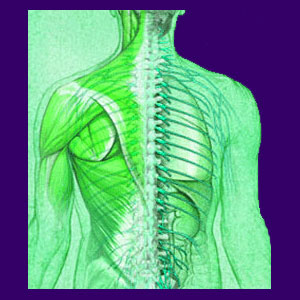
Myofasciitis is a general term meaning widespread pain in the muscles and fascia throughout the entire body or in specific bodily regions. The term used to be a separate diagnosis unto itself, but has more recently been lumped into the general umbrella diagnosis of fibromyalgia by rheumatologists worldwide. The condition is also commonly known as myofascial pain syndrome or MPS.
Myofascial is a term simply meaning involvement of the muscular and fascia tissues. While these tissue types may certainly be part of the pain condition, many patients also experience a more diverse symptomology, including neurological effects. Some doctors discount these as incidental, but in many cases, these may be the primary expressions of the syndrome and may even help with positive diagnosis.
This essay explores the crisis of myofascial pain problems in the medical arena and focuses on how doctors have really taken a horrifically wrong path when it comes to effective FMS care.
Macrophagic Myofasciitis
This particular form of myofascial pain is still actively diagnosed (in very small numbers) as a separate and usually easily treatable form of chronic muscle pain. The origin of this condition is not clearly understood, but it has been linked to environmental contamination, poisoning and inoculation reactions. The most common case profile has been reported in conjunction with malaria vaccines and some other types of injection therapies. In this type of myofascial pain, the symptoms originate from invasion of macrophage cells into muscular and fascial tissue causing pain and flu-like symptoms in most patients. This disorder can almost always be successfully treated with antibiotics and steroids.
In patients who do not respond, the diagnostic theory is often revised to indicate full fibromyalgia syndrome. Once this pronouncement of FMS is made, few patients ever statistically recover.
Myofascial Pain Syndrome
The fascial tissue has been implicated in a great number of pain syndromes, especially as it relates to the surrounding musculature and anatomical movement. This is the exact basis of the therapeutic back pain treatment known as Rolfing. In my experience, the fascia is rarely culpable for any significant symptoms, except in rare instances. The real source of symptoms typically turns out to be ischemia of the soft tissue and nerves in a regional area of the body.
This explains why the vast number of fibromyalgia treatments have been so utterly unsuccessful, since they almost all presuppose a structural reason for the pain, when all along, reality points to an oxygen deprivation syndrome as the true underlying source.
Remember, it is a proven fact that research scientists have discovered cellular changes in fibromyalgia sufferers consistent with long-term reduction of cellular oxygenation. This is medical fact.
Myofasciitis Hope
No matter what terminology is used to describe your widespread and chronic muscle pain, the causation is not likely to ever be successfully linked to a bodily anomaly. Some diseases can create these symptoms, but these conditions are easily diagnosed via blood tests.
Patients who do not appear to be suffering from a specific disorder, but still have intractable pain in the soft tissues, fall under the umbrella heading of fibromyalgia and are generally treated with dangerous and ineffectual drug therapies. This approach has proven to be idiotic and unenlightened, but it continues in epidemic numbers. No wonder rheumatologists are the least effective of all medical specialties currently treating back and neck pain.
You might be better off leaving the drugs behind and investigating knowledge therapy. This treatment has over 3 decades of proof as an effective and risk-free way to end many cases of fibromyalgia once and for all. You can learn more by researching the relationship between fibromyalgia and tension myositis syndrome.





